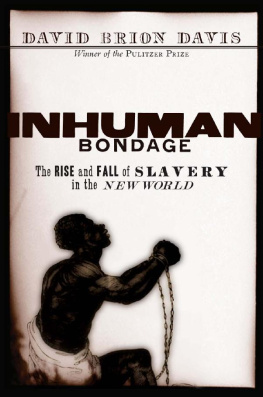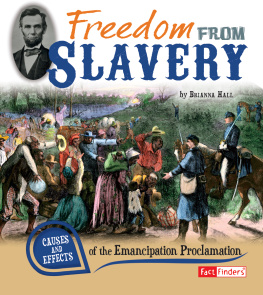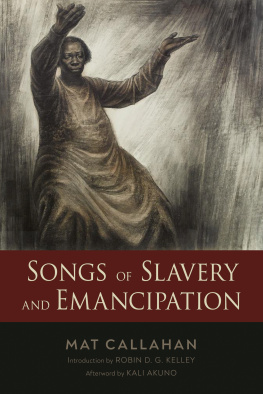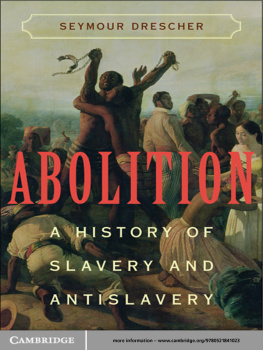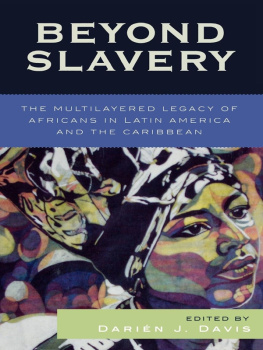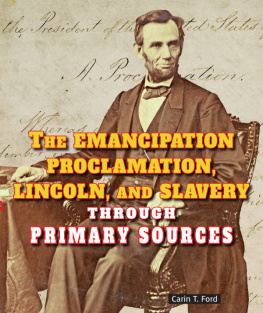THIS IS A BORZOI BOOK
PUBLISHED BY ALFRED A. KNOPF
Copyright 2014 by David Brion Davis
All rights reserved. Published in the United States by Alfred A. Knopf, a division of Random House LLC, New York, and in Canada by Random House of Canada Limited, Toronto, Penguin Random House Companies.
www.aaknopf.com
Knopf, Borzoi Books, and the colophon are registered trademarks of Random House LLC.
Portions of were originally published in The Impact of the Haitian and French Revolutions from Inhuman Bondage: The Rise and Fall of Slavery in the New World (New York: Oxford University Press, 2006). Reprinted by permission of Oxford University Press, U.S.A.
Portions of are taken from a Tanner Lecture on Human Values by the author delivered at Stanford University in 2006. Reprinted by permission of the Tanner Lectures on Human Values, a Corporation, University of Utah, Salt Lake City, Utah.
Library of Congress Cataloging-in-Publication Data
Davis, David Brion.
The problem of slavery in the age of emancipation / by David Brion Davis.First edition.
pages cm
ISBN 978-0-307-26909-6 (hardback) ISBN 978-0-385-35165-2 (eBook)
1. SlaveryUnited StatesHistory19th century. 2. SlavesEmancipationUnited States. 3. Free African AmericansHistory19th century. 4. Antislavery movementsUnited StatesHistory19th century. 5. Antislavery movementsGreat BritainHistory19th century. 6. African AmericansColonizationAfrica. 7. American Colonization Society. I. Title.
E 449. D 24 2014
306.362097309034dc23 2013032893
Cover images Dimitar Todorov/Alamy
Cover design by Chip Kidd
v3.1
To my beloved sons, Adam and Noah,
And their wonderful families
Contents
Preface
During the decades it took to write this trilogy on The Problem of Slaverythis volume was preceded by The Problem of Slavery in Western Culture (1966) and The Problem of Slavery in the Age of Revolution (1975)people repeatedly asked me, What led to your great interest in race and slavery? It therefore seems appropriate to begin this final volume with a fairly brief reply.
Given the national racial segregation of my childhood and youth, it is not surprising that while I and my parents made eight interstate moves across the country, and I attended five high schools in four years, I never shared a classroom with an African American. After turning eighteen, in early 1945, I became exposed to the appalling racism of the Jim Crow South, where I received months of combat training for the invasion of Japan. After the war unexpectedly ended, I found myself on a large troopship bound for Europe. Though seasick, I was ordered to take a club, go down into the hold, and keep the jiggaboos from gambling. In this highly segregated army, I had never dreamed there were any blacks on the ship. But after descending a long winding staircase, I came upon what I imagined a slave ship would have looked like. Hundreds and hundreds of near-naked blacks jammed together, many of them shooting craps. After answering the question What you doin down here, white boy?, I hid in the shadows for four hours until relieved of duty.
Months later, as a member of the armys Security Police in Germany, I witnessed armed and bloody conflicts between white and black American troops, mainly evoked by white fury over the sight of black soldiers dating and dancing with German girls. I also heard incredibly racist speeches from American officers, including General Ernest N. Harmon, who came from New England but denounced the government for ever sending black soldiers to Europe.
These experiences had a strong and lasting effect on my mind when I went on to attend Dartmouth College and graduate school at Harvard. Because of what I saw in the army, I read and was especially impressed by the Nobel Laureate Gunnar Myrdals An American Dilemma: The Negro Problem and Modern Democracy, which influenced the landmark 1954 decision Brown v. Board of Education, and by President Trumans Committee on Civil Rights 1947 report, To Secure These Rights. While I failed to become actively involved in the civil rights movement, I became deeply shocked by the discovery that slavery and racism had been largely ignored in my undergraduate and graduate courses. I owed this discovery to Kenneth M. Stampp, who came to Harvard from Berkeley as a visiting professor the year before the publication in 1956 of his landmark book The Peculiar Institution: Slavery in the Ante-Bellum South. Since, happily, he lived close to me, we became friends and had enlightening discussions on the subject of his book.
When I was lucky enough to become an assistant professor of history at Cornell the next year, I was determined to emphasize the importance of slavery in my teaching and to write a book that would provide an antislavery counterpart to the work of Stampp. But after studying some of the writings of abolitionist William Lloyd Garrison, I turned to the intellectual and international background of responses to slavery in Western culture. This expanded vision was partly the result of my undergraduate concentration on the history of political thought and philosophic views of human nature (I majored in philosophy). My decision to write The Problem of Slavery in Western Culture also owed much to a Guggenheim Fellowship that allowed me to do a significant amount of my initial research in Great Britain.
The three volumes of this trilogy differ from one another in very important ways, so it is essential at the start to describe the goals and scope of this book. Since I began writing The Problem of Slavery in the Age of Emancipation by 1980, my publication of other books, particularly Slavery and Human Progress in 1984 and Inhuman Bondage: The Rise and Fall of Slavery in the New World in 2006, radically changed the books plan and freed me from doing a broad survey of slavery and emancipation from the Haitian Revolution to the outlawing of slavery in Brazil in 1888. I have instead focused on writing a highly selective study of significant and often neglected aspects of this broad subject, centered especially on Britain and the United States. Yet the basic subject of the book is the incredible moral achievement of the Age of Emancipationthe fact that from the 1780s to the 1880s, thanks largely to abolitionist movements, slavery was outlawed from Canada and New England to Chile and Brazil.
I highlight Britain because of its unprecedented and powerful abolition movement, public mobilization, and peaceful but controversial act of freeing 800,000 colonial slaves. Britain not only provided a model of emancipation in the 1830s but had earlier become a global leader in promoting the abolition of oceanic slave trading.
I concentrate on America because the nation possessed by far the largest, most productive, and expanding slave population in the New World; because the example of freeing the slaves in all the Northern states raised the central issue of whether and how large numbers of freed blacks could coexist in a white world (quite unlike the West Indies); and because the unexpected Civil War led to the sudden freeing of some 4 million slaves, a critical turning point in the Age of Emancipation that redefined the meaning of British emancipation and exerted a profound influence on Cuba and Brazil.
As for subject matter, this book begins with an extensive discussion of the issue of dehumanization and its implicationsthe treatment of slaves as if they were domesticated animals and the continuing need of African Americans to confront and counteract the kind of white psychological exploitation that deprived them of the respect and dignity needed for acceptance as equals in a white society. I have long interpreted the problem of slavery as centering on the impossibility of converting humans into the totally compliant, submissive, accepting chattels symbolized by Aristotles ideal of the natural slave. Throughout the book, I devote much attention to the views of free blacks and former slaves who refute the belief that blacks are in some way subhuman but who also deplore the fact that extremely brutal treatment sometimes leads slaves to act like compliant brutes. This perceived animalization, implied by the language of such figures as David Walker and Frederick Douglass, took a different form when whites expressed fear of vicious, noncompliant, animal-like blacks intent on rebellion and revenge, as exemplified by the Haitian Revolution. Or when prominent Northern clergymen attacked slavery but insisted that the Irremediable Degradation of slaves required the colonization of free blacks outside the United States. These issues of black inferiority reached one kind of climax in Britain, as we see in the last chapter, when the lecturing of African American abolitionists helped to destroy British support for the American Colonization Society and when the lecturers expressed amazement over the lack of racism and basked in the public recognition of their full humanity. As Walker had predicted, despite his frequent despair, Treat us like men, and there is no danger but we will all live in peace and happiness together.



